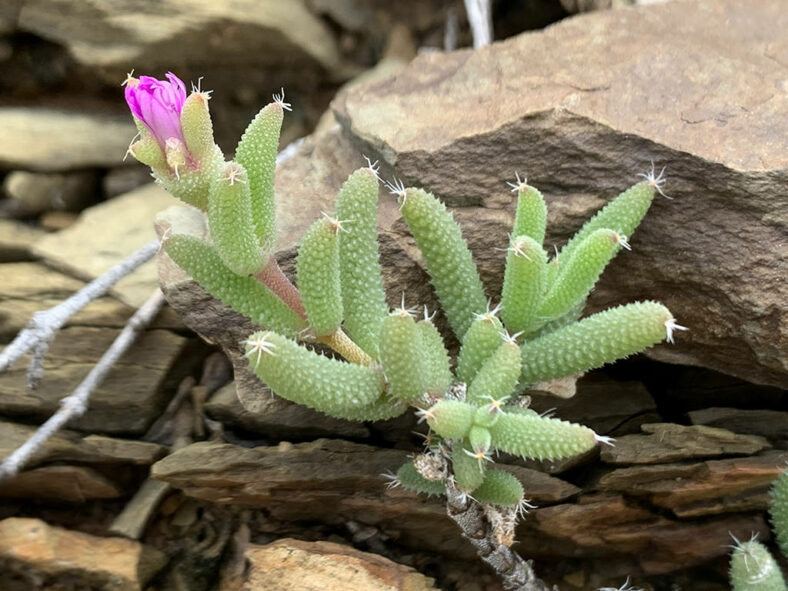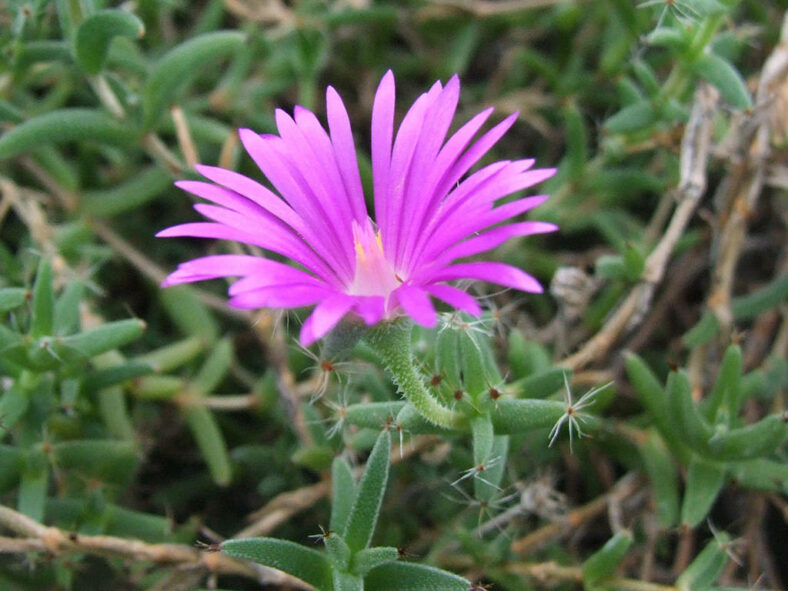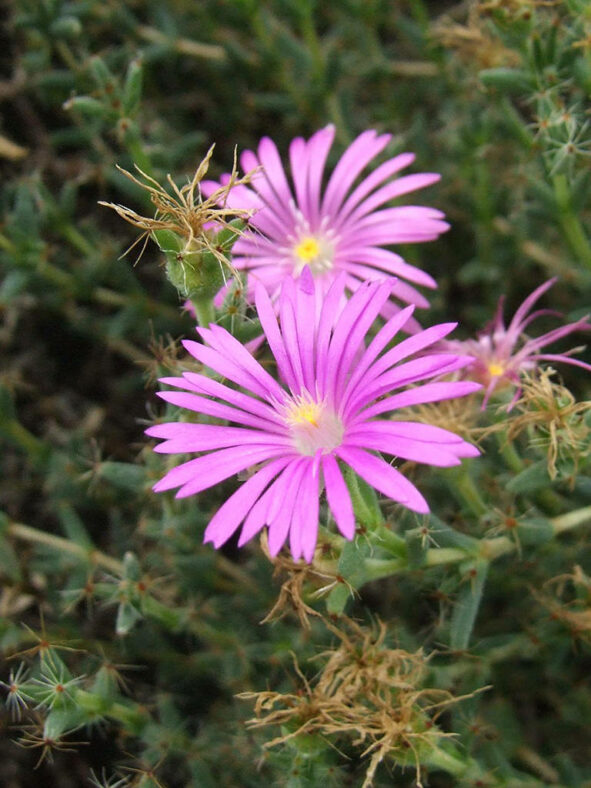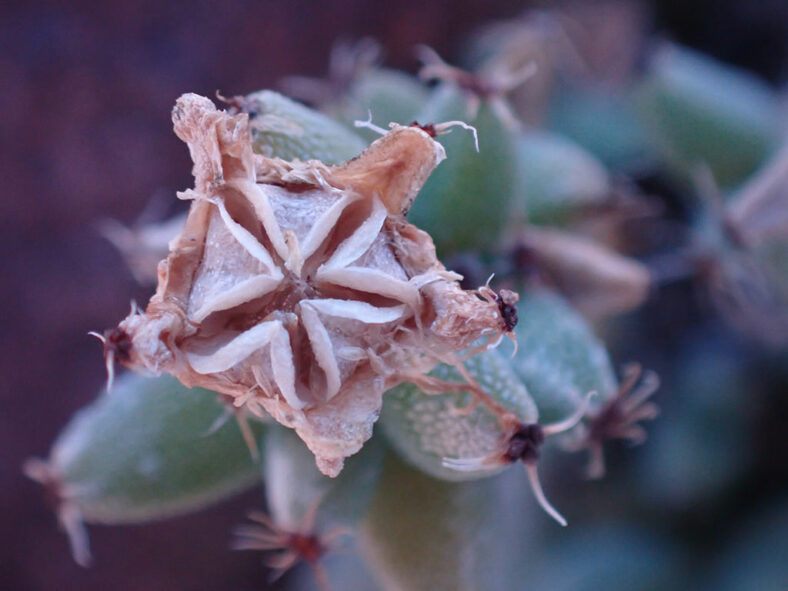Trichodiadema setuliferum is similar to Trichodiadema pomeridianum and Trichodiadema rogersiae but can be distinguished from the other two species by its papillate bladder cells. In contrast, those of the other two are smooth and without papillae.
Scientific Name
Trichodiadema setuliferum (N.E.Br.) Schwantes
Common Name(s)
Hairy Nipple Vygie
Synonym(s)
Mesembryanthemum setuliferum, Trichodiadema setuliferum var. niveum, Trichodiadema setuliferum var. setuliferum
Scientific Classification
Family: Aizoaceae
Subfamily: Ruschioideae
Tribe: Ruschieae
Genus: Trichodiadema
Etymology
The specific epithet "setuliferum" (pronounced sech-uh-LEE-fer-um) means "bristle-bearing" and refers to the white hairs at the tips of the leaves.
Origin
Trichodiadema setuliferum is native to South Africa. It occurs in the interior of the Eastern Cape province.
Description
Trichodiadema setuliferum is a succulent shrublet with small, narrow leaves arranged along its erect to decumbent branches in spaced pairs, each pair at right angles. The leaves are slightly triangular in cross-section and curve downward near the tips, measuring up to 1 inch (2.5 cm) long. They have a decorative coating of bladder sells with hair-like, apically curving papillae and a cluster of white bristly hairs at the tip. The leaf color can vary, ranging from green and yellowish-green to buff and pale brown.
During late winter and summer, Trichodiadema setuliferum produces daisy-like flowers with narrow, pink to magenta (or white in Trichodiadema setuliferum var. niveum) petals and a cone of white stamens in the center. The fruits are capsules with five locules.

How to Grow and Care for Trichodiadema setuliferum
Light: Trichodiadema setuliferum requires bright light but not too much direct sunlight. So, a windowsill that receives 4 to 5 hours of direct sunlight in the morning and partial shade in the afternoon will be a perfect spot for indoor growing.
Soil: The plant thrives in porous soil, allowing the water to drain away quickly. Therefore, use commercial soil for succulents or make your own well-draining mix.
Temperature: High temperatures are not a problem as long as there is plenty of fresh air, but this plant is not cold-hardy. It grows best in USDA Plant Hardiness Zones 9b to 11b, with average minimum winter temperatures ranging from 25 to 50 °F (-3.9 to 10 °C).
Watering: To keep your Trichodiadema setuliferum healthy, it is most important to know when, how much, and how often to water it. During the dormant period, usually in winter, the plant requires little or no water. From spring to fall, water it thoroughly but allow the soil to dry between waterings.
Fertilizing: As long as you repot this plant every two years, it does not need fertilizer.
Repotting: Even if it can stay happy in the same pot for years, once in a while, you can repot your plant to give it more space anytime during the growing season. However, the best time is at the beginning of the growing season.
Propagation: There are three methods to propagate this plant. The first method is to divide the clumps during the growing season, which is quite a simple process. The second method is to start the plant from seeds by sowing them in well-draining soil during spring. However, propagating the plant by stem cuttings can be challenging due to the high risk of rot.
Learn more at How to Grow and Care for Mesembs.
Toxicity of Trichodiadema setuliferum
Trichodiadema setuliferum is considered non-toxic and safe around kids and pets.
Links
- Back to genus Trichodiadema
- Succupedia: Browse succulents by Scientific Name, Common Name, Genus, Family, USDA Hardiness Zone, Origin, or cacti by Genus
Photo Gallery
Click on a photo to see a larger version.


